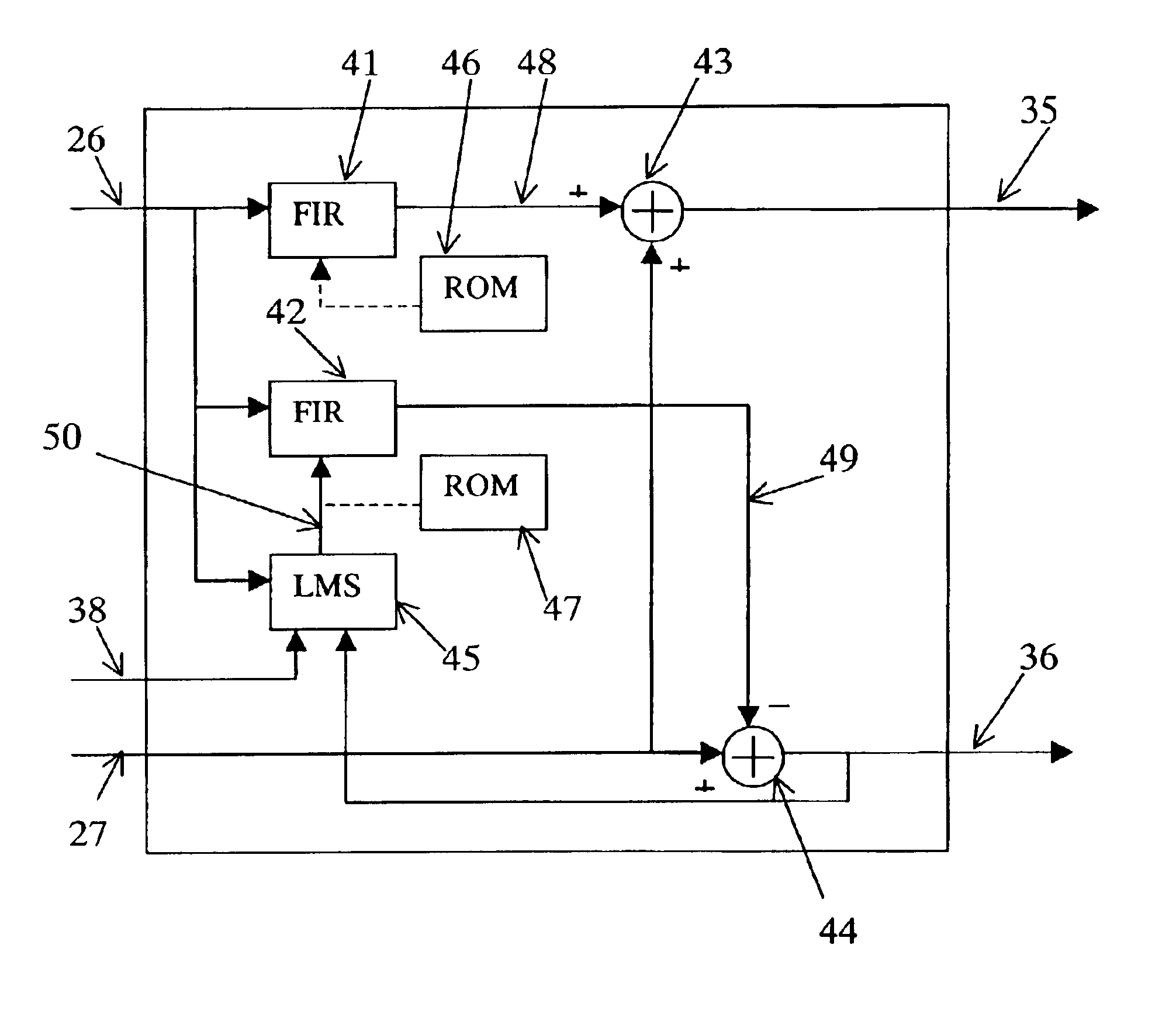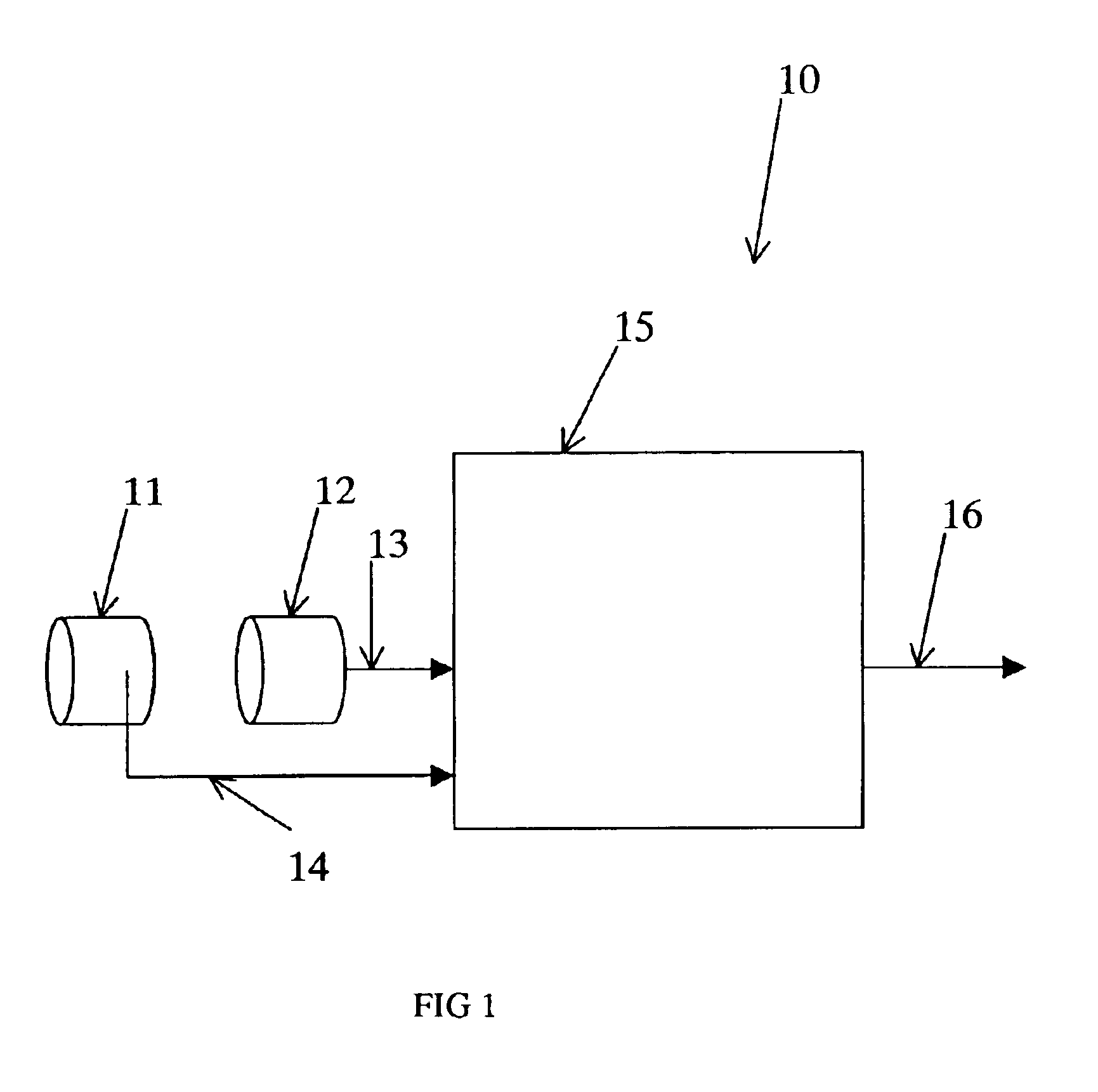Adaptive noise cancelling microphone system
a microphone system and noise cancellation technology, applied in the field of noise cancellation microphone systems, can solve the problems of difficult arrangement of microphones, difficult to achieve the effect of arranging microphones, and high distortion of desired speech signals, so as to achieve the effect of effectively cancelling unwanted noise and stable
- Summary
- Abstract
- Description
- Claims
- Application Information
AI Technical Summary
Benefits of technology
Problems solved by technology
Method used
Image
Examples
Embodiment Construction
[0054]FIG. 1 shows the block diagram of the adaptive noise canceling microphone system 10 according to the invention. The system 10 comprises a first microphone 11, a second microphone 12 and a processing unit 15. The processing unit 15 receives signals 13,14 resulting from sounds received by the microphones 11,12. An output result signal 16 is generated by the processing unit 15.
[0055]The two microphones 11,12 are arranged at a predefined distance, preferably between 2 cm and 3 cm, from each other so as to form a 3-dimensional beam for receiving sounds using digital signal processing techniques. The forming of the 3-dimensional beam is controlled by a signal forming system (described later) in the processing unit 15.
[0056]A detailed block diagram of the processing unit 15 is shown in FIG. 2. The signals 13,14 generated by the microphones 11,12 are amplified in a first amplifier 20 and a second amplifier 21, respectively. The amplified signals are filtered in a first and second low ...
PUM
 Login to View More
Login to View More Abstract
Description
Claims
Application Information
 Login to View More
Login to View More - R&D
- Intellectual Property
- Life Sciences
- Materials
- Tech Scout
- Unparalleled Data Quality
- Higher Quality Content
- 60% Fewer Hallucinations
Browse by: Latest US Patents, China's latest patents, Technical Efficacy Thesaurus, Application Domain, Technology Topic, Popular Technical Reports.
© 2025 PatSnap. All rights reserved.Legal|Privacy policy|Modern Slavery Act Transparency Statement|Sitemap|About US| Contact US: help@patsnap.com



